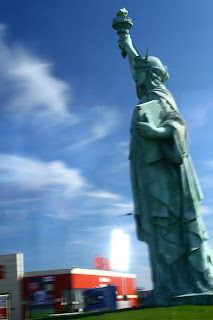

The boat was docked near a beautiful park in Speyer. Our tour guide walked us through the park to the central town square.
A very long time ago Speyer was a Celtic sttlement, then re-settled by the Romans, then destroyed in 450 A.D. by the Huns. From the 13th to the 18th century it enjoyed both prosperity and leadership as one of the seven free Imperial Cities in the Holy Roman Empire. Unlike so many other German cities, Speyer was not heavily damaged during the two world wars. Its major devastation occurred in the late 1600s when the French invaded and occupied the city until 1815.


An important law-making assembly of rulers was held in Speyer in 1529.

It was convened by the Holy Roman Emperor Charles V who was hoping to reach a compromise with the Lutheran princes. They would be sllowed to practice the "new" religion of Martin Luther within their own frontiers, but forbidden to impose it on their subjects. The princes strongly protested, then refused the offer. It was this incident that gave rise to the use of the word "Protestant".
The name of the town Speyer means "spire" in English, probably from the six soaring spires of the massive Romanesque Kaiserdom (Cathedral).
(On a side note, we're trying to catch up our blogging from the week on the river cruise. In reality, we just posted this
entry from the fast train from Amsterdam to Paris. Gotta love the train travel here...car attendants bringing snacks and beverages, free wifi and seats twice the size of airline seats and 3x the leg room!)


















































